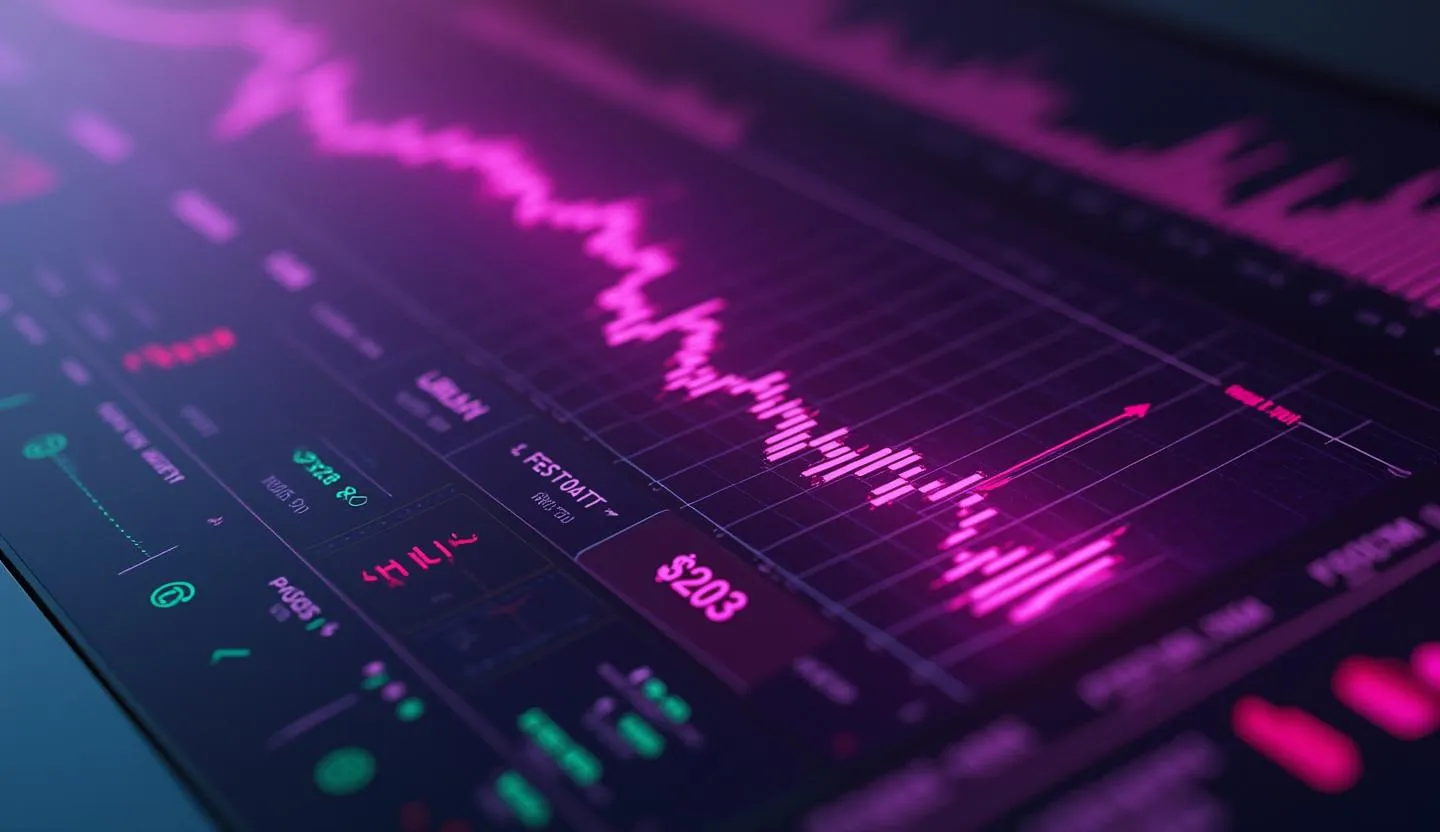Cautious Optimism Fades as Robert W. Baird Downgrades Couchbase to Neutral
Couchbase, Inc. (BASE), a provider of cloud database solutions for enterprise-scale applications, has just been downgraded by Robert W. Baird from Outperform to Neutral, despite a sharp run-up in its stock price following a buyout announcement. This move, coming amidst significant volatility, signals a critical inflection point for investors weighing the likelihood of additional upside versus the risks inherent in the acquisition process and recent legal developments.
In the software-as-a-service (SaaS) sector, analyst ratings are especially influential given the rapid evolution of business models and the outsized impact of strategic events like mergers or sales. Today’s downgrade reflects not only the recalibration of risk/reward in the wake of a proposed $24.50/share cash acquisition by Haveli Investments, but also rising scrutiny over deal fairness and process. Understanding the nuances behind this analyst shift is essential for navigating the uncertain post-buyout landscape.
Key Takeaways:
Potential Upside is Minimal: With Couchbase trading at $24.46 and the new price target set at $25, potential upside is less than 2.2%, signaling most of the buyout premium is already priced in.
Stock Price Has Surged: Couchbase stock jumped nearly 30% in the past week on news of the Haveli Investments buyout. The stock is now trading just pennies below the deal price.
Legal Scrutiny on the Buyout: Several law firms, including Kahn Swick & Foti and Ademi, have launched investigations into whether the buyout price is fair for public shareholders, introducing new uncertainty.
Unusually High RSI and Volume: The stock’s RSI has spiked to 81.68—deep in overbought territory—while volume hit multi-million share highs, reflecting speculative fervor.
Downgrade by a Respected Firm: Robert W. Baird, a well-established mid-market research house with a strong track record in technology coverage, signals caution as the risk/reward balance shifts.
Analyst Downgrade: Context and Implications
Robert W. Baird’s Rationale and Reputation
Robert W. Baird’s decision to downgrade Couchbase from Outperform to Neutral is notable given the firm’s history of deep sector research and its influence among institutional investors. Baird’s move comes immediately after Couchbase’s stock price converged on the $24.50/share deal price announced in the Haveli Investments acquisition. Their new price target, $25, indicates a near-zero premium to current trading, a classic signal that further upside is unlikely unless another bidder emerges or the buyout process faces disruption.
Baird is highly regarded for its technology sector coverage, with analysts frequently cited in financial media and buy-side research. Their shift to Neutral is a clear signal to investors that the easy gains have already been captured, and the remaining risk is now asymmetric: more likely to the downside if the deal faces headwinds, with only marginal upside if it closes smoothly.
Buyout Premium Already Priced In
Couchbase’s current price of $24.46 reflects near-complete market confidence in the $24.50 buyout closing. The less than 2.2% upside to Baird’s target suggests that arbitrageurs and retail holders alike have little to gain by holding out—unless they believe a higher counteroffer or regulatory intervention is imminent. This dynamic is typical in post-announcement merger-arb scenarios, but increased legal scrutiny can occasionally introduce volatility or delays, which investors must now monitor closely.
Stock and Financial Performance: Data-Driven Perspective
Stock Price Action: Volatility and Technicals
One-Year Range: BASE has traded between $12.78 (April 2025) and $25.16 (June 2025), with the recent surge bringing it to all-time highs.
Volume Surge: Volume peaked at over 13 million shares on deal announcement, versus an average of ~64,800 shares daily. This marks a dramatic increase in trading activity, indicative of event-driven buying and arbitrage positioning.
Technical Overextension: The RSI at 81.68, combined with the price far above the 20-day EMA ($19.89), points to overbought conditions—typically a warning for late entrants.
Financials: A SaaS Model in Transition
Couchbase’s revenue and earnings have historically reflected steady growth, driven by its hybrid cloud and on-premises database offerings. The company has positioned itself as an enabler for mission-critical applications across industries, with an emphasis on scalability and reliability. Prior to the buyout, the market viewed Couchbase as a potential consolidator in the cloud database segment, but the acquisition has effectively capped further growth speculation.
Financial Highlights:
Consistent revenue growth driven by enterprise cloud adoption
Margins reflective of SaaS scaling, but still in investment mode
Cash flow trends improving, but not yet strongly positive
The Legal Cloud: Recent News and Shareholder Actions
Regulatory and Litigation Developments
The past week has seen a flurry of legal news:
Kahn Swick & Foti Investigation: Former Attorney General of Louisiana Charles C. Foti Jr. and KSF are investigating whether the $24.50/share price is fair or if the process disadvantaged public shareholders. (Business Wire)
Ademi Law Probe: Ademi Firm is also reviewing possible breaches of fiduciary duty and legal violations in the transaction with Haveli Investments. (PRNewsWire)
“KSF is seeking to determine whether this consideration and the process that led to it are adequate, or [not].” — Business Wire, June 20, 2025
Legal challenges of this nature rarely block deals outright, but they can delay closure and sometimes result in modest upward adjustments to the buyout price. For investors, these developments add a layer of event risk and complexity to the seemingly straightforward merger-arbitrage play.
Market Reactions and Expert Viewpoints
The rapid price appreciation—nearly 30% in a single day—was covered by The Motley Fool, which noted the magnitude of the move and the context of the buyout:
“Couchbase (BASE 29.37%) stock is seeing a huge jump in Friday's trading following news of a buyout for the company. The software specialist's share price was up 30% as of 3:25 p.m.” — The Motley Fool, June 20, 2025
This sentiment, echoed across financial media, underscores the consensus that the deal price now sets a cap on further appreciation, and most analyst coverage—including Baird’s downgrade—reflects that reality.
What’s Next: Upside, Downside, and Risk Management
Potential Upside and Downside Risk
With BASE trading at $24.46 and the price target at $25, the theoretical upside is less than 2.2%. This is razor-thin, and the real risk profile is now skewed to the downside:
If the deal closes as expected: Investors pocket a small spread, typical of low-risk merger-arb.
If the deal faces delays or is challenged: Price could fall back toward pre-deal levels, exposing holders to the 30%+ downside witnessed before the announcement.
If a competing bid emerges: Rare, but possible, offering upside above the current deal price.
Key Considerations for Investors
Liquidity and Timing: As the stock approaches the deal price, liquidity can dry up and volatility may increase if the market senses a risk to closure.
Legal Outcomes: While lawsuits are common in merger deals, actual upward price adjustments or deal breaks are less frequent. Still, these risks are not zero.
Event-Driven Strategy: Investors may consider hedging strategies or reduce exposure, given the asymmetric risk/reward now present.
Conclusion: Downgrade Signals a Mature Event Trade
Robert W. Baird’s downgrade of Couchbase to Neutral reflects the classic post-buyout playbook: with the stock trading at the deal price, further upside is capped, and legal scrutiny raises the stakes for downside. The message is clear—this is now an event-driven situation with limited return and elevated risk. Navigating this phase requires attention to deal progress, legal developments, and the potential for unexpected shocks in a market that has already priced in perfection.
The best move may now be to lock in gains and redeploy capital where risk-adjusted returns remain more compelling.

.svg)
.svg)
.svg)
.svg)

.svg)

.svg)
















